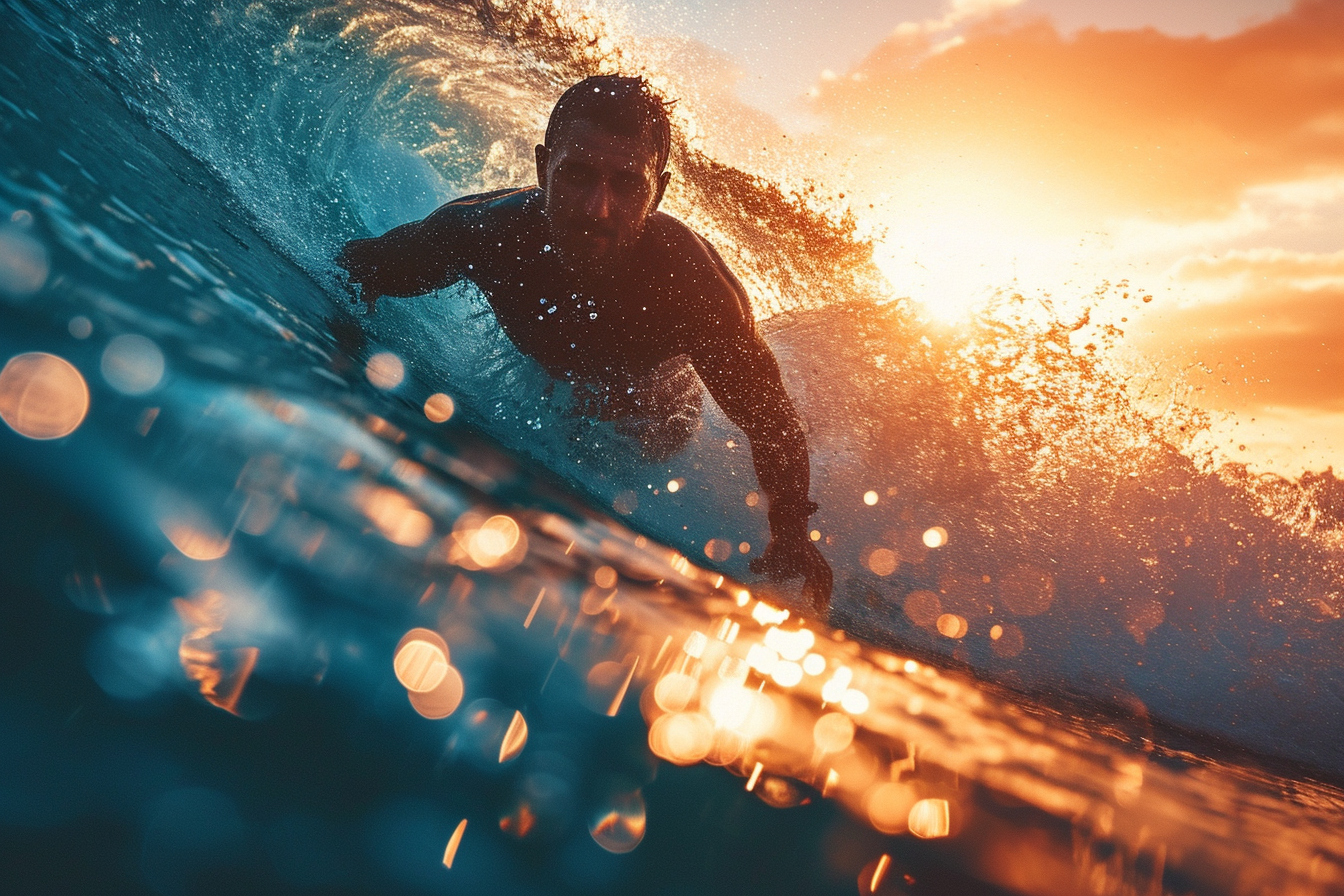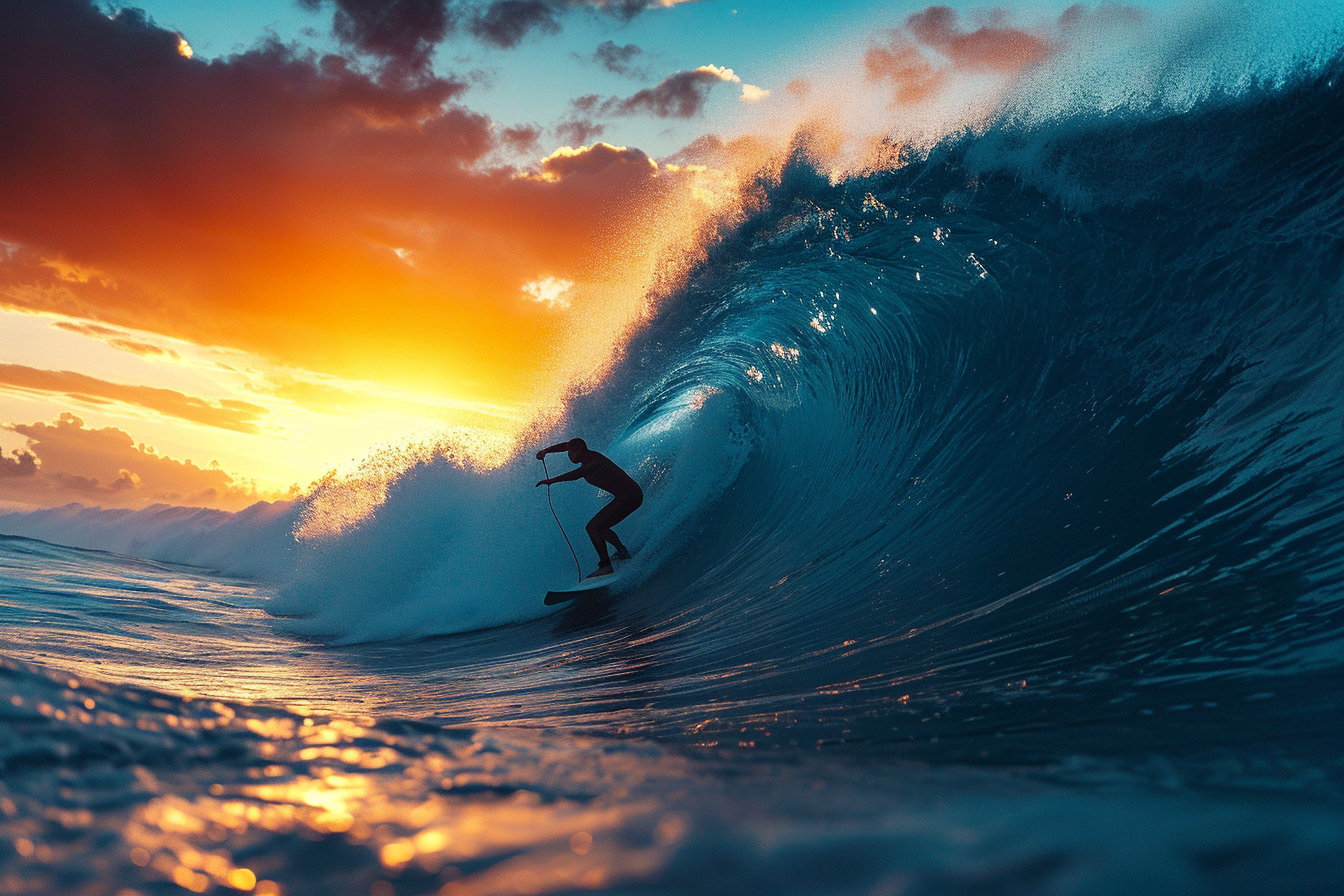Tow-in surfing is a thrilling sport that blends the excitement of traditional surfing with the power of mechanized assistance, typically via a Jet Ski or a boat. Designed to enable surfers to ride massive waves that are impossible to catch through paddling alone, tow-in surfing is an adrenaline-fueled activity that requires skill, precision, and the right approach to safety. Understanding the basics and preparing properly can help you transform from a novice to a proficient tow-in surfer, safely enjoying the rush of conquering colossal waves.
Tow-in surfing presents a unique challenge in the world of surfing. Despite being related to the traditional form, it fundamentally differs due to the reliance on an external force to catch waves. Large, fast-moving waves that crest and break rapidly need an approach that matches their intensity; this is where the power of a towing mechanism comes into play.
The essentials of equipment and gear
Before delving into the waves, it’s imperative to outfit yourself with the appropriate equipment. This includes not only a surfboard designed specifically for tow-in surfing but also a strong tow rope, a personal flotation device (PFD), and other safety gear such as helmets and impact vests.
The right tow-in surfboard
The surfboard used in tow-in surfing differs significantly from a regular board. These boards are heavier and more stable, often equipped with foot straps to secure the surfer’s feet in place. The added weight provides momentum, crucial for maintaining stability in the face of large waves and high speeds.
Tow ropes and watercraft
The tow rope should be resilient, maintaining the right balance between elasticity and strength to withstand the force of towing and the dynamic conditions of big waves. As for the watercraft, Jet Skis are the preferred choice due to their maneuverability and speed, allowing for quick repositioning to tow the surfer back to the wave or away from danger.
Safety gear
A PFD is non-negotiable. In case of wipeouts, it ensures the surfer remains buoyant. Helmets defend against head injuries, while impact vests provide extra protection for the body. Considering the potential risks of the sport, the investment in quality protective equipment is a wise decision for any beginner.
The importance of physical fitness and swimming proficiency

Physical fitness plays an integral role in tow-in surfing. It’s not just about muscle strength but also cardiovascular endurance, agility, and flexibility. Activities like swimming, yoga, and targeted strength training can prepare beginners for the demands of the sport.
Swimming capability cannot be overstated. A strong swimmer exudes confidence in water, especially in situations where separation from the towing mechanism occurs. Improving swimming skills is a foundational step for every aspiring tow-in surfer to help in controlling panic and maintaining focus during intense situations.
Developing essential surfing skills
While tow-in surfing employs unique elements, the foundational skills of traditional surfing still apply. Beginners must master techniques such as paddling, popping up on the board, and maintaining balance. As proficiency grows, advanced skills become more important – carving turns, reading wave patterns, and perfecting timing.
The role of a skilled partner
Tow-in surfing is a team effort. It demands a partnership between the surfer and the driver of the towing vehicle. The role of a skilled towing partner cannot be understated – this person navigates toward the waves while ensuring the safety of the surfer. The duo must foster impeccable communication and trust, as the driver must adeptly judge the right moment to release the surfer into the wave.
Building a partnership
Choosing the right partner is critical. Experience in handling a Jet Ski or boat in strong surf, along with a deep understanding of oceanic conditions and the specific dynamics of tow-in surfing, is a priority. Sessions spent training together strengthen the ability to operate as a seamless unit.
Training and practice
Training and practice sessions are vital to refining the connection between surfer and towing partner. Drills that simulate actual wave-catching scenarios, emergency response actions, and signaling techniques are of utmost significance for the safety and success of the team.
Understanding ocean conditions
A thorough grasp of ocean physics is essential for tow-in surfers. This includes knowledge of wave formation, swells, and the impact of weather patterns on surf conditions. Meticulous observation and the capability to interpret forecasts are tools that enable a surfer to predict the best spots for the sport.
Recognizing wave patterns
Learning to discern the right wave is an art in itself. Not all waves are suitable for tow-in surfing – it requires specific conditions. Big, clean, and organized swells that provide a long wall and plenty of space for maneuvers are the ideal targets for tow-in enthusiasts.
Timing and positioning
Timing and positioning dictate the success of a tow-in surfer’s ride. Expertise in judging the peak moment to engage with a wave comes from experience and keen observation. Coupled with the right positioning, it can lead to an exhilarating ride or a missed opportunity.
Safety considerations and risk management
Committing to tow-in surfing brings a responsibility to prioritize safety. Since tow-in surfing involves immense waves and speeds, the margin for error is narrow. Beginners must understand the risks involved and learn how to manage them effectively.
Preparing for emergencies
Preparation for emergencies should involve rigorous training in rescue techniques, first aid, and CPR. Bonding with the local surfing community and learning from their experiences can be invaluable. Moreover, investing time in safety workshops and rescue simulations pays off when critical situations arise.
A safety-first approach
A conservative mindset, especially while learning, is beneficial. This means knowing when to retreat and acknowledging limitations. It’s advisable for beginners to gradually increase the size of the waves they attempt to surf, ensuring a steady progression of skill and confidence.
Choosing the best locations
Selecting the optimal location for tow-in surfing depends on a range of factors, including wave size, type, and the ease of access for towing vehicles. Renowned spots around the world are known for their tow-in surfing conditions, such as Nazaré in Portugal and Jaws in Hawaii.
Assessing conditions locally
When scouting for local spots, it’s fundamental to research thoroughly. This involves examining the geography of the coastline, consulting local experts, and understanding the seasonal variations that affect wave quality and safety.
Environmental impact and respect
Beginners must adopt an ethos of respect for the ocean and its inhabitants. This involves minimizing environmental impact by avoiding disruption to marine life and following local guidelines surrounding such activities.

Tow-in surfing offers an exhilarating and challenging extension to the traditional sport of surfing. For beginners, mastering the fundamentals of equipment, physical fitness, partner cooperation, and ocean knowledge is the starting point to engaging safely and effectively with this extreme discipline. With a respect for both the power of the ocean and the necessary safety measures, tow-in surfing can provide an incomparable thrill. It’s essential for novice surfers to seek continual learning, remain mindful of their limitations, and progressively enhance their competencies to ensure their experiences in tow-in surfing are as unforgettable as they are safe.
As the journey of a tow-in surfing enthusiast unfolds, each day brings a new challenge and an opportunity to deepen the connection with the formidable power of nature. With dedication and prudent preparation, the art of mastering this magnificent and formidable form of surfing lies within reach.

